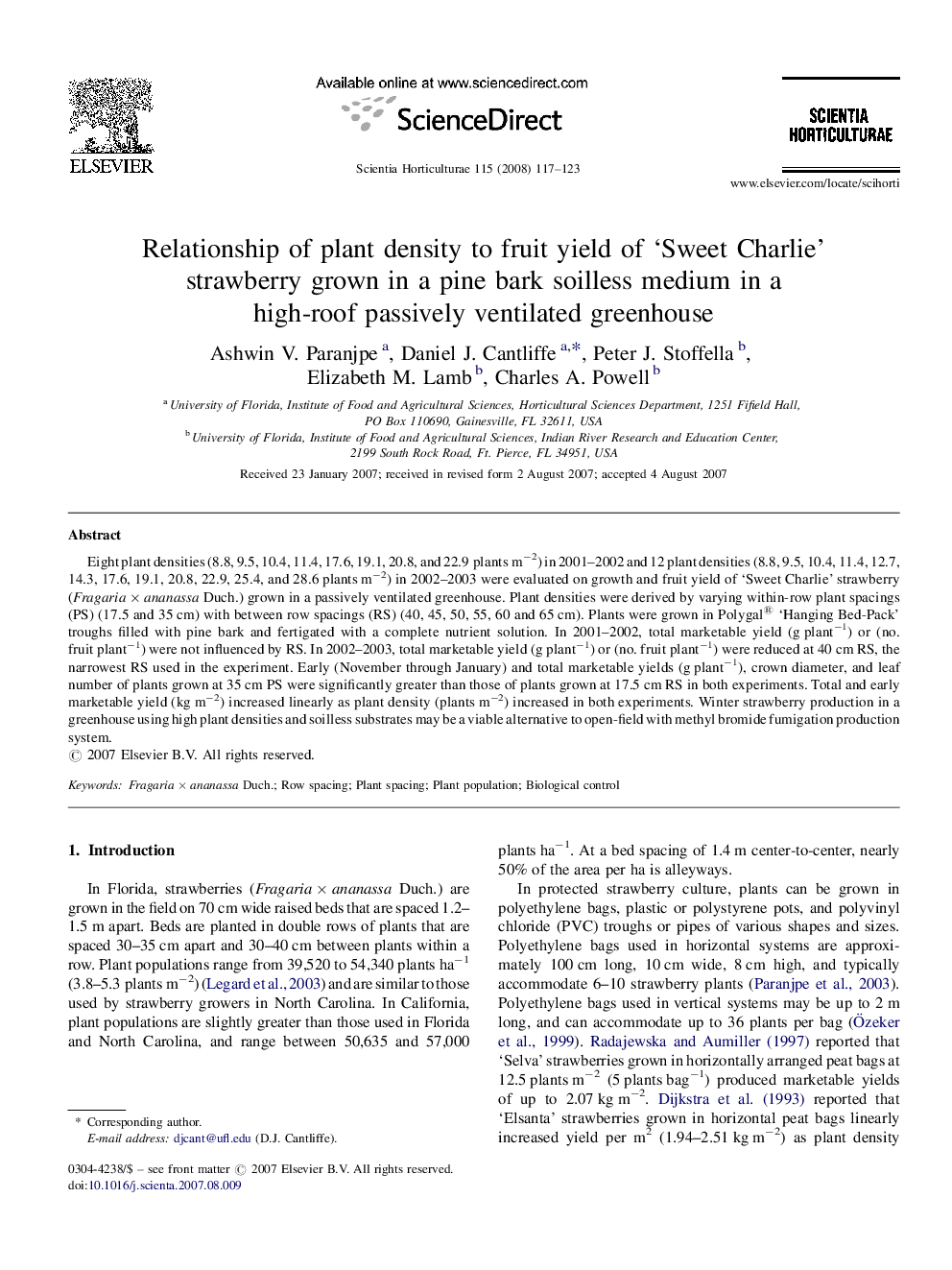| Article ID | Journal | Published Year | Pages | File Type |
|---|---|---|---|---|
| 4569497 | Scientia Horticulturae | 2008 | 7 Pages |
Eight plant densities (8.8, 9.5, 10.4, 11.4, 17.6, 19.1, 20.8, and 22.9 plants m−2) in 2001–2002 and 12 plant densities (8.8, 9.5, 10.4, 11.4, 12.7, 14.3, 17.6, 19.1, 20.8, 22.9, 25.4, and 28.6 plants m−2) in 2002–2003 were evaluated on growth and fruit yield of ‘Sweet Charlie’ strawberry (Fragaria × ananassa Duch.) grown in a passively ventilated greenhouse. Plant densities were derived by varying within-row plant spacings (PS) (17.5 and 35 cm) with between row spacings (RS) (40, 45, 50, 55, 60 and 65 cm). Plants were grown in Polygal® ‘Hanging Bed-Pack’ troughs filled with pine bark and fertigated with a complete nutrient solution. In 2001–2002, total marketable yield (g plant−1) or (no. fruit plant−1) were not influenced by RS. In 2002–2003, total marketable yield (g plant−1) or (no. fruit plant−1) were reduced at 40 cm RS, the narrowest RS used in the experiment. Early (November through January) and total marketable yields (g plant−1), crown diameter, and leaf number of plants grown at 35 cm PS were significantly greater than those of plants grown at 17.5 cm RS in both experiments. Total and early marketable yield (kg m−2) increased linearly as plant density (plants m−2) increased in both experiments. Winter strawberry production in a greenhouse using high plant densities and soilless substrates may be a viable alternative to open-field with methyl bromide fumigation production system.
